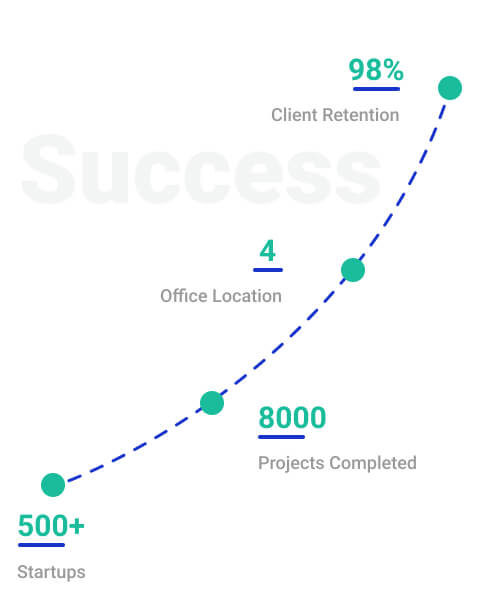The fact is that a significant volume of global trade nowadays
consists of international transfers of goods and services, capital
(such as money) and intangibles (such as intellectual property) within
a MNE group; such transfers are called “intra‐group”
transactions. In such a situation, it becomes important to establish
the right price, called the “transfer pricing”, for
intra‐group, cross‐border transfer of goods, intangibles and services.
“Transfer pricing” therefore refers to the setting of
prices at which transactions occur involving the transfer of property
or services between associated enterprises, forming part of an MNE
group. Transfer pricing agreement is done, reflecting the price that
would be charged between unrelated parties. It affects the allocation
of taxable income, tax revenues, and fairness in the global tax
system.
Objective of Transfer Pricing
The main objectives of transfer pricing agreement are:
-
Revenue Allocation: Transfer pricing determines how
profits are allocated among countries where MNEs operate, affecting
the tax revenue collected by each jurisdiction. It enables countries
to ensure that taxable profits are appropriately allocated based on
economic substance rather than artificial shifting.
-
Preventing Tax Base Erosion and Profit Shifting:
Transfer pricing rules help prevent aggressive tax planning
strategies that artificially shift profits to low-tax jurisdictions,
leading to erosion of the tax base. By ensuring arm's length
pricing, governments can safeguard their tax revenues.
-
Fairness and Equity: Transfer pricing mechanisms
strive to establish fairness in international taxation, ensuring
that MNEs contribute their fair share of taxes in each jurisdiction
where they operate. It aims to prevent tax avoidance and maintain
equity among taxpayers.
Importance of Transfer Pricing Agreement
Transfer pricing plays a significant role in international taxation
and has several important implications for multinational enterprises
(MNEs), tax authorities, and the global economy. Here are some key
reasons why transfer pricing is important:
Tax Compliance
Transfer pricing is crucial for ensuring that MNEs comply with tax
regulations and laws in different jurisdictions. Tax authorities
require MNEs to determine the prices of intercompany transactions
based on the arm's length principle. By establishing appropriate
transfer prices, MNEs can demonstrate that they are conducting their
transactions on a fair and non-discriminatory basis, reducing the risk
of tax disputes and penalties.
Fair Allocation of Profits
Transfer pricing helps ensure a fair allocation of profits among
different entities within an MNE. By accurately pricing intercompany
transactions, MNEs can prevent the shifting of profits to low-tax
jurisdictions, reducing the potential for tax avoidance. It then
allows for a more equitable distribution of tax revenues among
countries and helps maintain the integrity of the global tax system.
Avoidance of Double Taxation
Transfer pricing is instrumental in avoiding double taxation, which
occurs when the same income is taxed in multiple jurisdictions. By
adhering to transfer pricing rules, MNEs can provide documentation and
evidence to tax authorities to support their pricing decisions. This
helps eliminate disputes between tax jurisdictions and provides a
basis for determining which jurisdiction has the right to tax the
income.
Transparency and Documentation
Transfer pricing promotes transparency and documentation, requiring
MNEs to maintain detailed records and documentation supporting their
pricing decisions. This documentation serves as evidence to
demonstrate that the pricing is consistent with the arm's length
principle and helps resolve potential disputes with tax authorities.
Transparent transfer pricing practices enhance trust between taxpayers
and tax authorities and contribute to a more efficient tax
administration.
Global Economic Stability
Transfer pricing is crucial for maintaining global economic stability.
It ensures that MNEs engage in fair trade practices and do not engage
in artificial profit shifting or base erosion. By preventing
aggressive tax planning strategies, transfer pricing rules help
preserve the integrity of the tax systems of different countries,
reduce tax revenue losses, and contribute to a level playing field for
businesses worldwide.
Risk Management
Transfer pricing provides MNEs with a framework for managing the tax
and financial risks associated with cross-border transactions. By
establishing consistent transfer pricing policies and agreements, MNEs
can minimize the risk of tax audits, penalties, and reputational
damage. It also allows them to anticipate and address potential tax
risks and uncertainties proactively.
Transfer Pricing Calculating Methods
The five basic methods for calculating transfer pricing are as
follows:
-
Comparable Uncontrolled Price (CUP) Method: This
method compares prices charged for similar products or services in
transactions between unrelated parties as a benchmark to determine
arm's length prices.
-
Cost plus Method: The cost-plus method adds a
reasonable profit margin to the cost of production to arrive at an
arm's length price. The costs may include direct costs, indirect
costs, and an allocation of appropriate overhead expenses.
-
Resale Price Method: This method sets the transfer
price based on a resale price of the product while deducting an
appropriate gross margin and determines the cost of a product to the
reseller.
-
Profit Split Method: The profit split method
allocates profits based on the relative contribution of each entity
involved in a controlled transaction.
-
Transactional Net Margin Method (TNMM): The TNMM
compares the net profit margin earned by a related party from a
controlled transaction with the net profit margins realized by
independent enterprises engaged in similar transactions.
Challenges in Transfer Pricing
Transfer pricing poses several challenges for multinational
enterprises (MNEs), tax authorities, and the global tax system. Some
of the key challenges in transfer pricing are as follows:
Complexity
Transfer pricing is inherently complex due to the multitude of factors
that need to be considered, such as the functions performed, risks
assumed, and assets employed by each entity involved in the
intercompany transaction. Determining an appropriate transfer price
that satisfies the arm's length principle requires a thorough analysis
of comparable transactions and economic conditions. The complexity
increases when dealing with intangible assets, such as intellectual
property, where valuation and allocation become challenging.
Lack of Comparables
One of the primary methods used in transfer pricing is the comparable
uncontrolled price method, which requires identifying comparable
transactions between unrelated parties. However, finding truly
comparable transactions can be difficult, especially for unique or
specialized products, services, or intangibles. The availability and
reliability of data for comparables can be limited, leading to
uncertainties in determining arm's length prices.
Interpretation and Disputes
Transfer pricing regulations and guidelines are subject to
interpretation, leading to differences in opinions between MNEs and
tax authorities. The lack of precise guidelines in some jurisdictions
can result in inconsistent approaches and disputes. Disagreements may
arise over the selection of transfer pricing methods, comparables, or
the appropriate level of documentation. Resolving these disputes can
be time-consuming, resource-intensive, and may strain the
relationships between taxpayers and tax authorities.
Multiple Jurisdictions and Inconsistencies
MNEs operating in multiple jurisdictions face the challenge of
complying with different transfer pricing rules and regulations. Each
jurisdiction may have its own transfer pricing guidelines,
documentation requirements, and interpretations of the arm's length
principle. This can lead to inconsistencies in the treatment of
intercompany transactions and increase compliance burdens for MNEs.
Transfer Pricing Documentation
Adequate transfer pricing documentation is crucial for demonstrating
compliance with transfer pricing rules. However, preparing
comprehensive and contemporaneous documentation that meets the
requirements of various tax jurisdictions can be burdensome. The
documentation needs to include detailed analysis, financial data,
economic studies, and other supporting information, requiring
significant resources and expertise.
Divergent National Regulations
Countries have different transfer pricing regulations, creating a
complex web of rules and documentation requirements. Harmonization of
transfer pricing rules across jurisdictions is essential to reduce
compliance burdens and promote consistency.
Base Erosion and Profit Shifting (BEPS)
BEPS refers to the tax planning strategies used by MNEs to shift
profits from high-tax jurisdictions to low-tax jurisdictions. This can
be achieved through aggressive transfer pricing practices, such as the
excessive payment of royalties or management fees to related entities
in low-tax jurisdictions. BEPS poses challenges for tax authorities in
enforcing transfer pricing rules and capturing the appropriate tax
revenue.































































